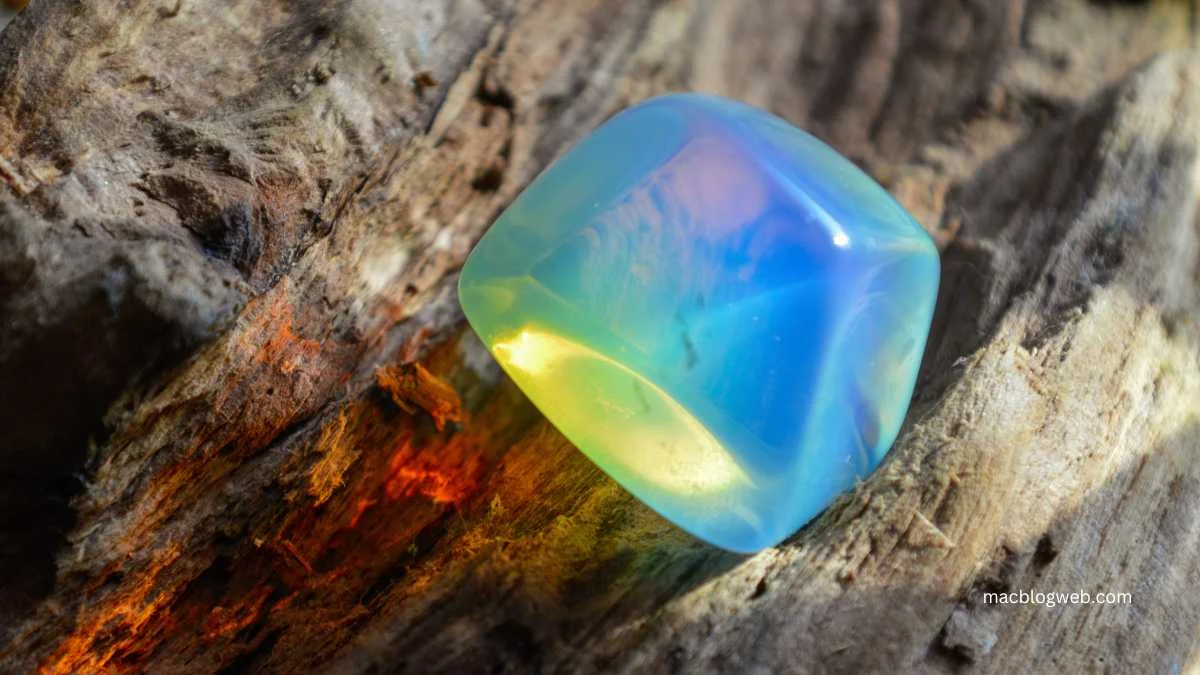Opalite, often surrounded by a blend of fascination and confusion due to its synthetic and natural variants, is a gemstone known for its alluring opalescent qualities and intriguing properties. This detailed exploration delves into the origins, characteristics, uses, and misconceptions surrounding, providing a comprehensive understanding of both its man-made and natural forms.
Understanding Opalite: Synthetic vs. Natural
Opalite is a term that refers to two distinct types of stones: a man-made synthetic glass and a type of natural opal commonly known as “common opal.” Both forms are celebrated for their aesthetic appeal, but they differ significantly in composition, properties, and uses.
Synthetic Opalite
Synthetic Opalite, also known under trade names like argenon, sea opal, and opal moonstone, is a form of opalescent glass. This glass is specifically crafted to mimic the appearance of natural gemstones such as opal and moonstone. The allure of synthetic lies in its remarkable ability to exhibit luminous colors when light interacts with the material, creating a captivating visual effect.
Characteristics of Synthetic Opalite:
- Appearance: When placed against a dark background, synthetic-Opalite displays a magical blue hue. Against a light backdrop, it appears milky white with an orange or pink glow.
- Formation: Being a type of glass, synthetic-Opalite may contain air bubbles, a natural result of the glassblowing process. These bubbles can add to the uniqueness of each piece but also distinguish it from natural gemstones, which typically do not contain such inclusions.
Natural Opalite
Natural Opalite, or common opal, is composed of tiny spheres of silicon dioxide arranged in a grid-like structure. This arrangement allows for the distinctive cat’s-eye effect seen in high-domed cabochon cuts. Unlike its more famous relative, the precious opal, common opal does not display the vibrant play of color but has its own subtle charm.
Characteristics of Natural-Opalite:
- Chemical Composition: Silicon dioxide with a variable water content.
- Optical Effects: Some specimens may exhibit a cat’s-eye effect, but the stone generally lacks the color play found in precious opals.
- Color Variations: Typically displays soft, muted colors with a pearly luster.
Historical Significance and Modern Appeal
While synthetic-Opalite is a relatively modern invention, designed to replicate the beauty of natural stones at a more affordable price, natural-Opalite has been known and used for centuries. Both forms of it has their places in jewelry making, spiritual practices, and decorative arts.
Applications in Jewelry and Decor
Particularly the synthetic variety, is widely used in jewelry due to its captivating look and affordability. It is crafted into beads, cabochons, and other decorative items, making it accessible for various fashion styles and preferences. Natural also finds its way into jewelry collections, prized for its unique, understated beauty.
Spiritual and Healing Properties
In metaphysical circles, It is believed to have healing properties. It is said to improve communication on all levels, especially the spiritual. It is also thought to remove energy blockages of the chakras and meridians, aiding in transitions of all kinds. These attributes make it popular among those interested in energy healing and crystal therapy.
Care and Maintenance
Caring for it, particularly synthetic, involves safeguarding the stone from scratches and sudden temperature changes that could cause it to crack. Cleaning should be done using mild soap and warm water, avoiding harsh chemicals that can damage the glass.
Conclusion
Opalite, whether synthetic or natural, continues to captivate with its unique beauty and intriguing properties. From its use in vibrant jewelry to its purported metaphysical benefits, it holds a special place in both the material and spiritual realms. As we continue to appreciate and explore the depths of this enchanting stone, its allure only seems to grow, bridging the gap between the natural and the crafted, the ancient and the new.








